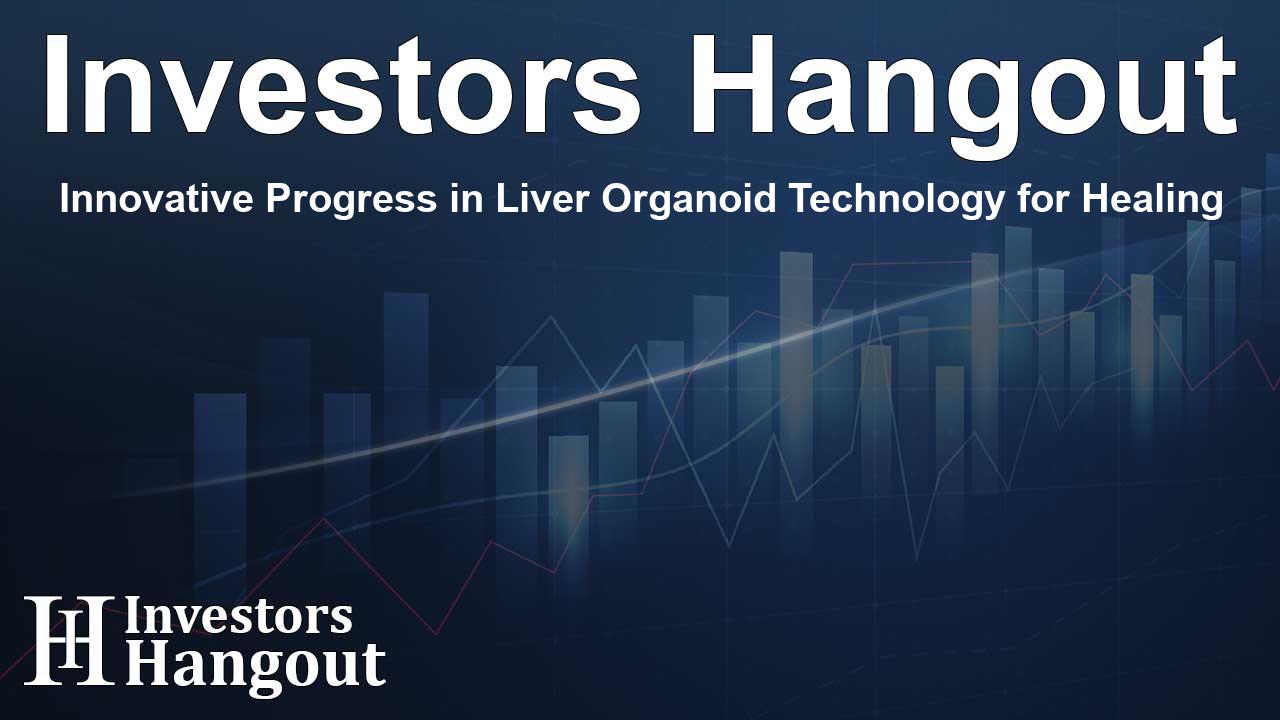Innovative Progress in Liver Organoid Technology for Healing

Advancements in Liver Organoid Technology
Recent developments in organoid technology have captured the attention of the scientific community, paving the way for significant breakthroughs in the field of regenerative medicine. Researchers from leading institutions recently announced a revolutionary method for generating liver organoids that possess the remarkable ability to grow their own internal blood vessels. This groundbreaking achievement marks a pivotal moment in the quest for effective treatments for liver-related conditions.
Implications for Patients with Coagulation Disorders
This innovative approach holds immense potential for individuals suffering from hemophilia and other coagulation disorders. By creating organ-specific blood vessels, the team has opened doors to targeted therapies that could enhance blood coagulation processes and minimize complications associated with these conditions. This advancement strengthens the bridge between laboratory research and practical clinical applications, highlighting the importance of organoid research in creating tailored treatment options.
Closer to Developing Transplantable Tissues
Moreover, the progression toward generating liver organoids with integrated vascular structures brings researchers a step closer to producing transplantable repair tissues for patients with liver damage. Traditional tissue engineering has faced challenges in creating viable liver tissues that can integrate seamlessly with the recipient's body. However, the ability to develop independently functioning blood vessels within these organoids could significantly improve the viability and longevity of transplantable tissues.
The Science Behind the Breakthrough
So, how does this groundbreaking process work? Researchers utilize advanced stem cell technologies to cultivate cells that can differentiate into various types of liver tissues, alongside the formation of vascular structures. By meticulously guiding the development of these cells, scientists have achieved a level of complexity that closely mimics natural liver tissue.
Potential for Future Organ Regeneration
The implications of these advancements extend beyond treating coagulation disorders. Scientists believe that enhanced organoid technologies could eventually lead to full organ regeneration, providing hope for those relying on transplants. Continuous research in organoid development will likely yield solutions for various medical challenges, reinforcing the role of innovative science in addressing pressing health issues.
Ongoing Research and Future Directions
As scientists continue to delve into the intricacies of liver organoids, ongoing research efforts are anticipated to unveil even more groundbreaking findings. Collaboration among researchers and institutions globally will be instrumental in refining these technologies to ensure their applicability in clinical settings.
Exploring Additional Applications in Medicine
The future of liver organoid technology is not solely confined to treating liver issues. Potential applications may include drug testing, disease modeling, and the development of personalized medicine approaches tailored to individual patient needs. By unlocking the true potential of organ specific technologies, the scientific community can drive forward a new era in healthcare that emphasizes targeted, efficient, and effective treatments.
Frequently Asked Questions
What are liver organoids?
Liver organoids are miniature, organ-like structures generated from stem cells that replicate the anatomy and functionality of the liver, making them useful for research and potential therapies.
How can liver organoids benefit patients?
Liver organoids can provide insights for developing treatments for liver diseases, drug testing, and could eventually lead to transplantable liver tissues.
What conditions could liver organoid research address?
This research could potentially address conditions such as liver damage, hemophilia, and other coagulation disorders through advanced treatments.
Are there other types of organoids?
Yes, researchers are developing organoids for various organs, including lungs, heart, and kidneys, each providing valuable insights for their respective fields.
What is the future of organoid technology?
The future is promising, with advancements aimed at integrating organoids into medical therapies, personalized medicine, and understanding complex diseases more effectively.
About The Author
Contact Logan Wright privately here. Or send an email with ATTN: Logan Wright as the subject to contact@investorshangout.com.
About Investors Hangout
Investors Hangout is a leading online stock forum for financial discussion and learning, offering a wide range of free tools and resources. It draws in traders of all levels, who exchange market knowledge, investigate trading tactics, and keep an eye on industry developments in real time. Featuring financial articles, stock message boards, quotes, charts, company profiles, and live news updates. Through cooperative learning and a wealth of informational resources, it helps users from novices creating their first portfolios to experts honing their techniques. Join Investors Hangout today: https://investorshangout.com/
The content of this article is based on factual, publicly available information and does not represent legal, financial, or investment advice. Investors Hangout does not offer financial advice, and the author is not a licensed financial advisor. Consult a qualified advisor before making any financial or investment decisions based on this article. This article should not be considered advice to purchase, sell, or hold any securities or other investments. If any of the material provided here is inaccurate, please contact us for corrections.
